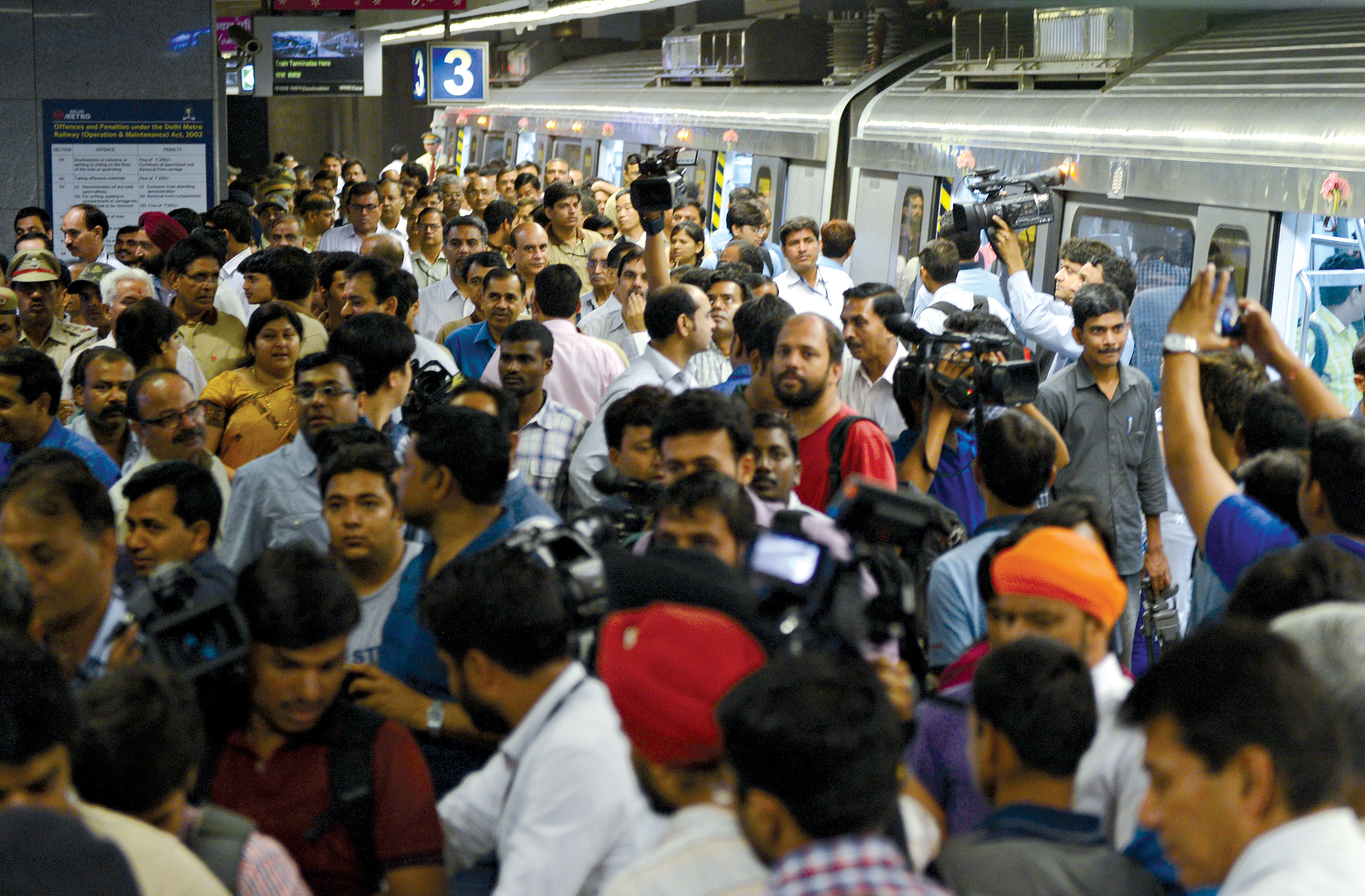The Delhi Metro was subject to two major technical snags in the past 15 days, resulting in hassles for lakhs of passengers who avail of its services
Twenty-eight lakh – this is the number of people that ride the Delhi Metro on a daily basis. Imagine the chaos that will ensue if even a part of this is shut down. In the past week, the Delhi Metro has been subject to many technical glitches, that disrupted the journey for many a rider.
Delhi Metro’s Blue Line was affected by technical glitches on December 5. “Returning from my office in Rajouri Garden to Noida took me more than two hours. I reached home at around 10.30 in the night,” says Alisha Singh, who works at a restaurant in Rajouri Garden.
Train services between Dwarka, Noida and Vaishali were affected on the evening of December 5 from 7 pm. There was earlier a glitch the same afternoon from 3 pm to 3.30 pm, which was resolved, but for the riders, unfortunately, that was not the end of their travails.
Due to loss of intermittent signaling, according to a DMRC official, the trains which usually travel between stations at an interval of two and a half minutes were travelling at intervals ranging from five to eight minutes.
But passengers said that trains were being delayed even further than that. Akash Sen, who travels from Noida Sector 18 to Dwarka said that in a span of 45 minutes from 7 pm, only three trains arrived at the station, and they too were highly overcrowded, so he couldn’t board the train.
Even platforms at the different stations on the Blue Line became overcrowded, with a mass of people waiting to catch a train. Incidentally, over 10 lakh passengers travel every day on the Blue Line, thus making it the busiest Metro route in the city.
Metro officials claimed that the issue was resolved in the night after the metro had stopped functioning. But problems were far from over. The next day, December 6, was again turned into a nightmare for passengers travelling on the Blue Line. “At around 10 am, I was travelling to my office as usual to Dwarka from Noida Sector 18. The journey usually takes around 90 minutes”, says Kushal Kapoor, a resident of Noida Sector 25.
“I got on the train at 10 am and reached my destination around 12.30 pm. It took me two and a half hours to reach my destination”, he adds. He further says that the train was stranded for more than half an hour at the Yamuna Bank station.
“I journey every day from Noida City Centre to Rajiv Chowk and then interchange to go to my office in Gurgaon,” says IT professional Nakul Kumar.
“The journey to Rajiv Chowk which usually takes around half an hour took me more than an hour and 15 minutes. This was around 11 am,” he adds.
However, the major problem that had affected the Blue Line was that there was no train plying from Dwarka to Vaishali. Trains were travelling only to Noida. Passengers had to get down at Yamuna Bank station and then had to take a train to Vaishali from there.
According to a DMRC official, “The automatic signaling system failed and thus we were doing the signaling manually. Since there are trains going to two directions in the Blue Line, we were manually operating from the Yamuna Bank station, which was the intersection point between the Noida and Vaishali lines.” He further added, that it is because of this manual signaling that the trains halted at stations for longer intervals and thus the waiting time for trains had increased.
This line however, was not the only one which was affected recently by a technical fault. Due to signaling fault, trains at the Magenta line which plies from Jankpuri West to Botanical Garden and connects important places like Okhla, Jamia Milia Islamia and Terminal 1 of the airport had come to a standstill. Trains were travelling at a speed of a mere 25 km per hour, thus increasing the travel time.
“I travel on the Magenta Line every day from Jasola Vihar to Kalkaji Mandir and then board the Violet line to go to my office in Greater Kailash. The journey which takes not more than 20 minutes took me more than an hour”, said passenger Rakesh Kamal.
The Magenta Line is one of the newer lines of the Delhi Metro only having become operational earlier this year, and is already facing issues within six months of its opening.
“With such frequent technical failures it is becoming extremely unpredictable for us to travel in the Delhi Metro, but we have no choice since it is the easiest and cheapest mode of travel”, says Rakesh Kamal.
According to the DMRC official, technical snags “are bound to happen in such a vastly connected and busy mode of transport. But we rush to resolve it immediately without any delay”. “We have contacted Siemens, the company who manages our signaling, and they have assured us that they will look in to the matter”, concludes the official.





